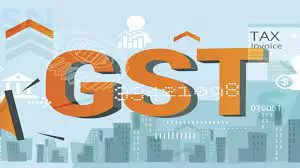[ad_1]

According to a Deloitte survey of C-suite and C-1 level executives, India Inc. identifies key areas for GST 2.0 reforms as the tax completes 7 years of implementation on July 1, 2024. These reforms include rate rationalization, improved dispute resolution, and faceless assessments.
The survey reveals that 84 per cent of respondents express a positive sentiment towards GST, up from 59 per cent at GST @ 5 and 72 per cent at GST @ 6. Additionally, 73 per cent now see competitive pricing as a major benefit, reflecting growing confidence and significant strides in GST implementation.
Key Priorities for GST 2.0
The survey identifies several critical areas for improvement and reform in GST 2.0. Rationalizing GST rates remains a top priority, aiming to simplify the tax structure and reduce the burden on businesses. Measures to enhance dispute resolution mechanisms and the removal of input tax credit restrictions are also highlighted as crucial steps to unlock working capital and improve cash flow for businesses.
Introduction of faceless assessment and vendor compliance rating systems are among the significant recommendations. These initiatives are expected to streamline processes, reduce human intervention, and enhance transparency, making compliance simpler and more efficient.
Streamlining Business Operations
A focal point of the report is the emphasis on simplifying the ease of doing business, particularly in adjudication and audit proceedings. The removal of parallel and multiple proceedings, along with expansive legal interpretations, is deemed essential to reduce the complexity and improve efficiency in GST administration.
Leveraging GST data for unlocking business insights and the introduction of a long-awaited compliance rating system are also high on the agenda. These measures are anticipated to provide valuable analytics for businesses and the government, driving informed decision-making and policy formulation.
Support for MSMEs
From the perspective of Micro, Small, and Medium Enterprises (MSMEs), the survey underscores the need for a seamless registration process and the adoption of paperless invoicing. These steps are expected to ease the operational burden on MSMEs, fostering a more conducive environment for growth and compliance.
Positive Sentiment and Operational Benefits
Reflecting on the implementation journey, the report highlights significant strides in GST’s rollout, with an enhanced positive sentiment among taxpayers. An impressive 84 per cent of respondents acknowledge a positive perception of GST, up from 59 per cent in GST @ 5 and 72 per cent in GST @ 6, indicating growing confidence in the system.
One of the key operational benefits cited is competitive pricing, with 73 per cent of respondents recognizing it as a major advantage, a substantial increase from 56 per cent in GST @ 5 and 61 per cent in GST @ 6. This underscores the reform’s role in fostering a more competitive business environment.
Economic Resilience and Future Outlook
India’s GST collections have shown remarkable buoyancy, exceeding INR 20.14 trillion in FY 2023-24, reflecting the country’s economic resilience. This robust performance paves the way for GST 2.0, a phase poised to bring further rationalization and efficiency to the system.
Deloitte’s comprehensive online survey, spanning six key sectors—Consumer; Energy, Resources, and Industries; Technology, Media, and Telecommunications; Banking and Financial Services; Government and Public Services; and Life Sciences and Healthcare—provides a well-rounded perspective on the current state and future expectations of GST.
[ad_2]
Source link






